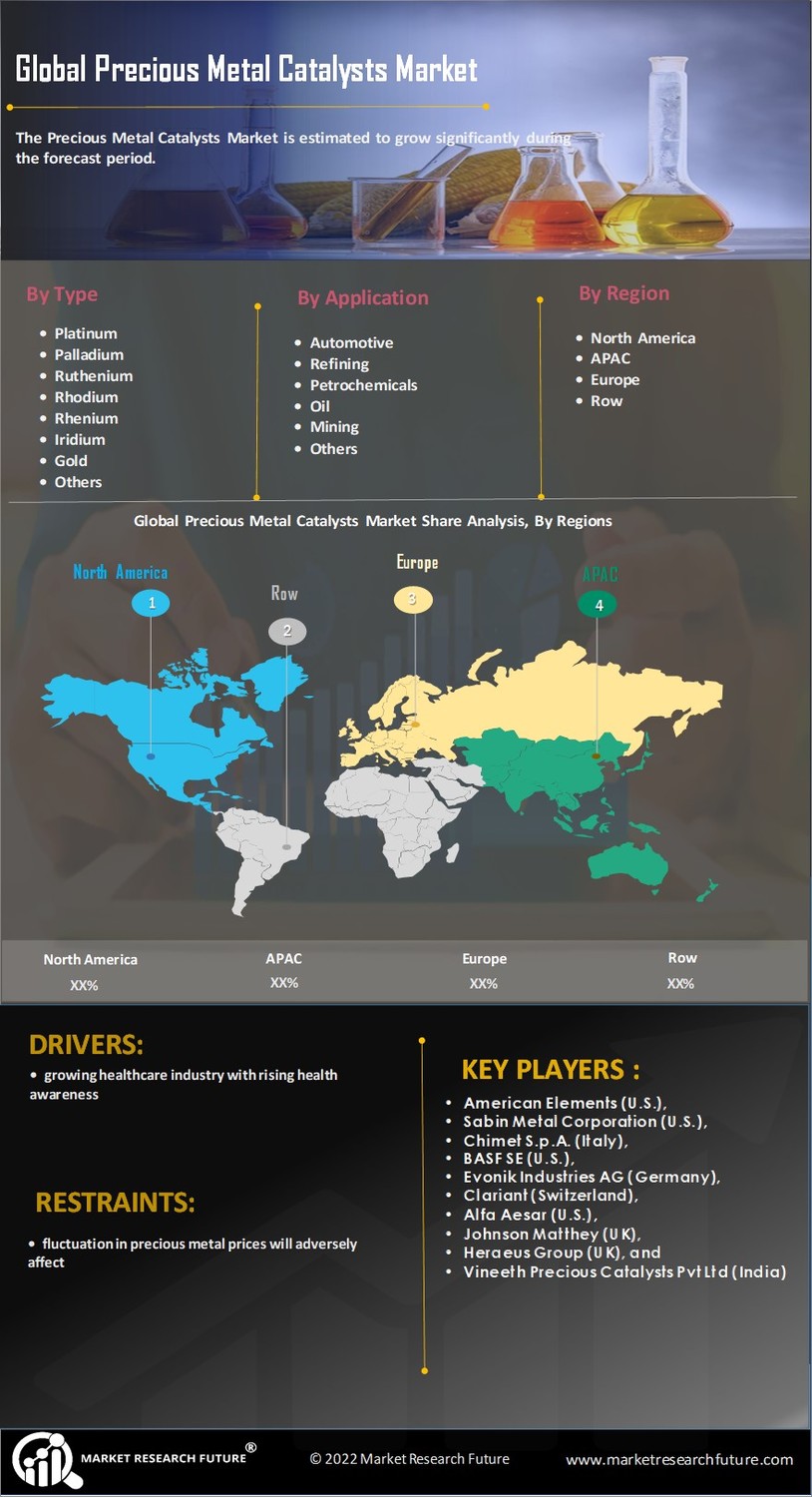In October 2023, Evonik Industries announced its intention to enhance and relocate its catalyst production facility located at the Shanghai Chemical Industrial Park. The aim of this endeavor is to strengthen the firm’s foothold and capabilities in the precious metal catalyst markets.
In July 2023, The carve-out process across the business mobile catalysts emissions and precious metal services was built up by BASF after the legal entity was incorporated BASF Environmental Catalyst and Metal Solutions (ECMS). This decision was announced in December of 2021 with the intention of being completed during a time span of 18 months.
In October 2023 - Evonik announced a joint undertaking with other companies to develop, scale up production and undertake commercially exclusive bed fixed catalysts into a mobile application of Hydrogenious LOHC Technologies liquid organic hydrogen carrier benzyl toluene-based technology.
In April 2024 - Research scientists presented a new strategy for recycling metal waste into a catalyst that is able to efficiently produce hydrogen from water. Cars or power-generating machines may efficiently use hydrogen as fuel since it is much more sustainable.
Tanaka Holdings Co., Ltd., a recycler of precious metals, said in August 2023 that it has established a brand new refinery in Japan that promotes the recycling of scraps of gold and silver together with other platinum metals. This new refinery aims at producing compounds of precious metals for a variety of catalysts and for plating.
In July 2023, BASF Environmental Catalyst and Metal Solutions communicated to the public that they are starting a new division that provides emissions catalysts and precious metals services. This division is engaged in the production of emission catalysts for petrol-fueled and diesel-fueled automobiles as well as off-road cars, motorcycles and small engine applications.
By improving the efficiency of industrial processes through the use of auto-catalysts, emissions from gasoline and diesel engines can be reduced. The platinum group metals found in autocatalysts have proven most effective in reducing pollution generated by a variety of gasoline and diesel vehicles for more than 35 years.
In the average 10-year life span of a vehicle, an autocatalyst would remove 98% of the harmful emissions from the exhaust. Without them, the average family car would emit 15 tonnes of toxic gases. The use of platinum along with pollution control catalysts in automobiles is also widespread. Examples of applications include vehicle engine control sensors, airbag initiators, electronic engine management, and spark plugs. In the third quarter of 2019 and 2020, global auto production was approximately 65 million units and 50 million units, respectively, according to OICA (International Organisation of Motor Vehicle Manufacturers).
In light of COVID-19, production has decreased. The automobile industry, nevertheless, is expected to recover during the forecast period due to the lifting of lockdown laws and transportation regulations. The enhancement of medical technology with platinum also improves health care.
There is also a lot of utilization of platinum group metals in the pharmaceutical industry since platinum, palladium, ruthenium, rhodium, iridium, and osmium are used in several important catalysts. Platinum-based emissions control catalysts are discovering an increasing number of applications and increasing the demand for platinum catalysts from sources such as automobiles, refineries, petrochemical plants, industrial chemical processing plants, and pharmaceutical plants, among others, thus increasing the market studied.

















Leave a Comment